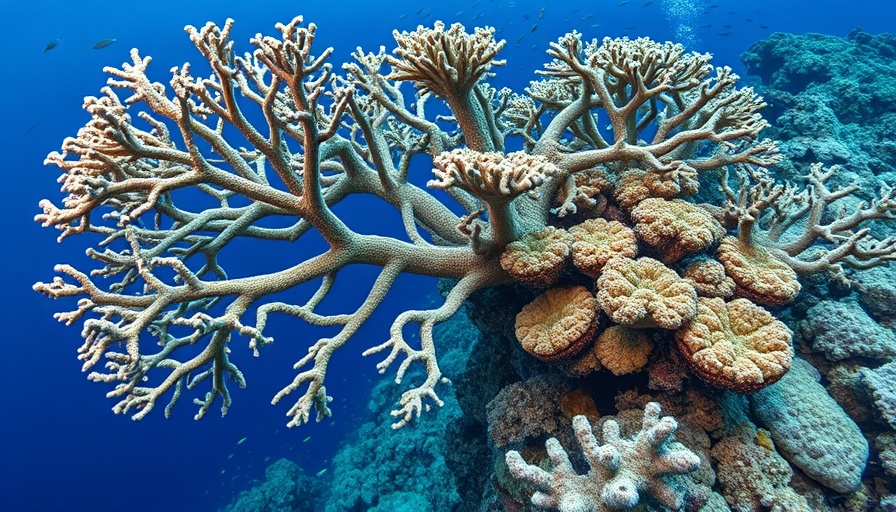
Tides Turning: Ocean Acidification's Dangerous Rise
The world’s oceans have crossed a crucial planetary boundary, significantly raising alarms for marine biodiversity and global ecosystems. As assessed in recent studies, the acidification of our oceans has surpassed the safe thresholds for critical ocean habitats, a trend driven by increasing levels of carbon dioxide (CO₂) from human activities such as fossil fuel combustion. This ongoing crisis threatens numerous marine species that rely on calcium carbonate for survival, such as corals and shellfish.
The Science Behind Acidification
When CO₂ from the atmosphere dissolves in ocean waters, it forms carbonic acid, leading to a reduction in pH levels—a process known as ocean acidification. The aragonite saturation state is a critical factor in this equation, representing the concentration of carbonate ions available in seawater, which are essential for marine organisms like corals to build their skeletons. Recent studies show alarming trends: as of 2020, four out of the seven major ocean basins have breached the safe levels of aragonite saturation, with particularly severe impacts in polar regions.
Impact on Marine Habitats
The consequences of crossing this planetary boundary are far-reaching. Approximately 40% of surface ocean waters have become too acidic for numerous marine creatures, resulting in a dramatic decline in suitable habitats. Coral reefs, which host a diverse array of marine life and protect coastal communities, have seen their habitats shrink by around 43%. Likewise, the habitat for polar sea snails, a key food source for various animals, has plummeted by 61%. The implications extend to coastal bivalves—crucial for natural storm protection—which have experienced a 13% loss in viable habitat. This loss compromises not only marine ecosystems but also the livelihood of communities dependent on these resources.
Broader Implications for Environmental Conservation
As the reality of ocean acidification sinks in, it emphasizes the urgent need for climate action and sustainable practices. Historically, the ocean’s ability to absorb CO₂ has been viewed as part of nature's solution to climate change; however, it is now clear that this ability has limits. Environmental policies must accelerate to reduce emissions drastically to slow the rate of acidification. Adopted measures like carbon taxes or incentives for renewable energy, such as solar and wind, are essential in reshaping our impact on the planet.
How Can We Contribute to Sustainable Solutions?
Individuals can implement sustainable solutions to mitigate climate change, starting with their consumption patterns. Embracing a vegan lifestyle or supporting ethical fashion can significantly reduce one's carbon footprint. Moreover, engaging in practices like composting, upcycling, and recycling can contribute to waste reduction and encourage circular economy principles. By actively participating in community gardens or green initiatives, we can foster awareness about the importance of biodiversity and environmental conservation.
Future Predictions: Navigating The Challenges Ahead
The current trajectory of ocean acidification demands action beyond individual choices. Experts predict that without significant intervention, marine biodiversity could face catastrophic losses, affecting food security and economies globally. Yet it’s not too late. By prioritizing environmental stewardship through education and responsible consumption, society can pave the way towards restoration and resilience.
Building a Sustainable Future
As we come to terms with the significant challenges posed by ocean acidification, the path forward must be one grounded in sustainability. Whether through the use of eco-friendly products or support for renewable energy initiatives, every step counts. There’s an urgent need for global cooperation and community-driven action to restore our oceans and ensure a sustainable future for generations to come.
To foster awareness and inspire collective action, consider engaging in local sustainability initiatives or advocating for environmentally responsible policies. Each individual action can contribute to a larger movement towards preserving our planet and its invaluable marine resources.
 Add Row
Add Row  Add
Add 



Write A Comment